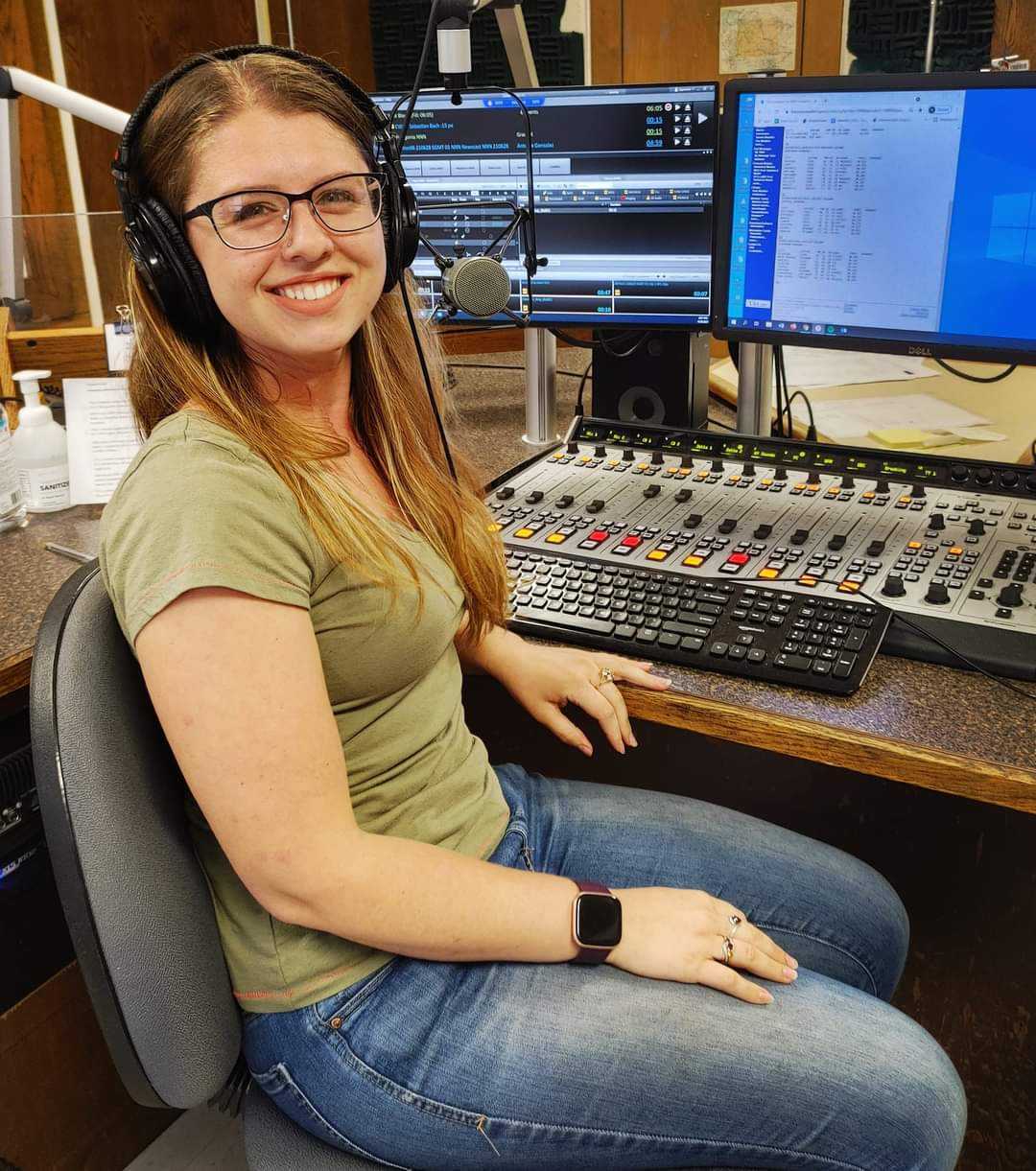 By Jocelyn Rockhold
By Jocelyn Rockhold
Water bears are microscopic, but their use in vaccine research could be big. The tiny, eight-legged invertebrates are known for surviving extreme conditions, a quality that has piqued the interest of researchers — and University of Wyoming student journalist Sage Montana, who wrote a story on the subject this spring.
According to Montana's article, published through Wyoming Public Media, scientists believe proteins found in water bears can reveal strategies to make vaccines more resilient to extreme temperatures, improving vaccine storage and distribution.
Science-focused stories like the piece written by Montana are the core of a science communication internship program facilitated by the University of Wyoming. The program puts students in direct work with local media over the summer, including outlets like the Laramie Reporter and Sheridan Press.
“We had interns all over the state at various times, and I wanted them to work with their editors to find a local story that made sense for the community,” said Kristen Landreville, who until recently directed the program. Stories “were localized to where the interns were,” she said, such as a Jackson Hole News&Guide intern writing a story on the microbes in geothermal features in Yellowstone National Park.
The program began in 2017 when University of Wyoming EPSCoR — the college’s chapter of a state-federal research fund — received a $20 million grant from the National Science Foundation. About $200,000 of those funds were pegged to support science communication initiatives, including the internship program.
Landreville hit the ground running, developing a curriculum and a student and editor evaluation process to monitor progress. Over the summer, students are required to read science communication and journalism readings to supplement the internship.
“We had a course I developed that would educate interns about science journalism and science communication,” Landreville said. “They also did weekly journal entries, readings and reflections and created a portfolio at the end. We also did pre-internship surveys and mid-internship evaluation surveys from the editors and the students. And then we had a final evaluation.”
The National Science Foundation grant makes it possible to pay the students an hourly wage, and some interns elected to receive course credit as part of their degree requirements. Most students work 20 to 30 hours per week.
All students must apply to the internship program by sending materials to the internship director, who is employed by the university. In some years, the application process prioritizes students who completed certain courses — for example, in the 2021 cycle, the internship gave preference to students who had completed the Media, Science, and Society class that previous spring. The internship attracts a mix of journalism and STEM students.
“I actually found a lot of success in recruiting biology, chemistry, physics, environment, natural resources majors who were really passionate about science but wanted to expand their skill sets of how they could get jobs,” said Landreville. “So science, communication and journalism was very helpful for them to add to their toolbox of different skills in their fields.”
According to Landreville, many newspapers in Wyoming are owned by local families rather than large corporations. Many of them still face issues like shrinking newsrooms, especially after the COVID pandemic, but one part of the solution lies within the University of Wyoming science communication internship program.
“It was a huge help to [the outlets] to have an intern with them at the paper. Even though they had to invest the time into mentoring them, they still were able to have the intern produce a lot of stories for them,” said Landreville.
Students in the program can also work with Wyoming Public Radio. One prior intern, Signa McAdams, reported on her community, the Wind River Indian Reservation, and one of her stories was picked up by National Native News. Landreville’s most recent grant application to the National Science Foundation stipulated that the internship program would hire at least one Indigenous reporter each summer.
Landreville said outlets want to “keep journalists in the state of Wyoming,” adding that reporters and editors “show students what life is like as a journalist, what their life could be like, and try to recruit them after the internship to stay in the state.”
Landreville is facilitating the transition process for a new director of the internship program, which will again be funded by the National Science Foundation and run until at least the summer of 2026.
“I’m really proud of my interns,” said Landreville.
One person who participated in the program now works as a science communicator for the American Institute of Physics. A former intern at Wyoming Public Radio, Ivy Engel, was hired on as a news reporter. According to Landreville, the program has led to a “lot of really cool stories of success,” and a lot of the students “are working in journalism still, which is really neat.”
